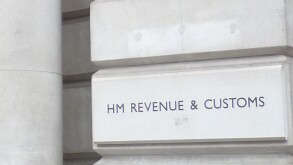There has never been a time when intangibles have played a bigger role in the global economy than now. The rapid migration to digital platforms and technologies will prevail as we recover from the COVID-19 pandemic, and enterprises continue to invest in their digital capabilities to keep pace with the changing ways in which we function in society.
In its publication on Action 8 of the BEPS project, the OECD proposed potentially far reaching changes to the Chapter VI of the OECD TP Guidelines (OECD TP Guidelines) dealing with intangibles.
Based on the principles set out in the 2017 version of the OECD TP Guidelines, regulators and tax authorities are globally increasingly focusing on taxpayers’ intangibles arrangements and TP outcomes, at the same time that the importance of intangibles is increasing for the above reasons.
This article discusses the shifting landscape of TP controversy and challenging TP concepts of intangible arrangements having regard to interpretive guidance issued by tax authorities in Australia and Germany.
Defining intangibles
Intangibles create value and are a major factor in creating competitive advantage and sustainability for companies. Rapid technology adaptation and digitally enabled business models have led to the emergence of new intangibles as key profit drivers.
All enterprises own some type of intangibles, but not all companies have done the work to identify their intangibles, the legal ownership rights attached to these intangibles and their value. Similarly many companies may not have developed processes to manage their intangibles and the tax and TP implications they present.
Intangibles are often simply referred to as ‘IP’. However, IP stands for intellectual property and must not be confused with the broader concept of intangibles.
Chapter VI of the OECD TP Guidelines states that the term ‘intangible’ addresses something which is not a physical or financial asset, is capable of being owned or controlled for use in commercial activities, and whose use or transfer would be compensated if it occurred in a transaction between independent parties in comparable circumstances (OECD TP Guidelines 2017, paragraph 6.6). This definition is intentionally broad, stating that intangibles for TP purposes could extend beyond e.g. accounting definitions.
DEMPE
Let us imagine a situation where we have several related parties that are involved in the development and exploitation of an intangible. The fundamental issue that arises is how to allocate the income from the exploitation of the intangible to the contributing parties. The OECD has identified five functions that are critical in the accurate delineation of transactions associated with intangibles: development, enhancement, maintenance, protection, exploitation (DEMPE).
The OECD recognises that payments for use of an intangible should principally be made to the party having the legal rights to such intangible. However, when another party undertakes critical functions or makes decisions in respect of these intangibles, the OECD TP Guidelines comment that a reward for such activity should also be considered.
A level of uncertainty and therefore much controversy arises in practice regarding whether, and how much, income should be reallocated from the legal owner to other members of the group for their respective contributions, and how should this be established, including timing (OECD TP Guidelines 2017, paragraphs 6.32 and 6.42).
In such matters, the critical question lies in an analysis of the behaviour of the parties in respect of the intangible, as opposed to simply the contractual agreement. Whilst contracts will still be important to express the intent of the parties involved, they would only be respected for TP purposes to the extent that they are consistent with the actual activities performed.
Accurate delineation of transactions
Chapter I of the OECD TP Guidelines introduces the concept of ‘accurate delineation of the transaction’, requiring a more granular functional analysis, with a focus on the economic substance of the actual transactions (as opposed to form) and the behaviour of the parties involved, to determine which entities within a group are entitled to share in the returns connected to intangibles.
The debate as to what constitutes an accurate delineation in practice, and what the implications of that should be for pricing, is at the heart of much of the controversy arising in this area.
Pricing of intangibles – shift in methodology
Intangibles represent unique and valuable assets, and there is often a lack of strong ‘comparables’ relevant to the controlled transaction involving intangibles. As intangibles become more complex, unique and valuable, identifying external comparable transactions becomes increasingly problematic.
There is a growing debate and challenge that the uniqueness of high value intangibles means that commonly applied transactional methods (i.e. the comparable uncontrolled price (CUP) method, especially external database CUPs) may no longer be suited or reliable.
This has been seen in positions taken by tax authorities (in recent reviews and audits) where the external CUP method has been rejected on the basis that it does not produce reliable results. Furthermore, the use of a cost-plus approach to reward entities providing services to the legal owner of intangibles is also being challenged on the basis that it does not adequately reward the value provided by such services providers. These challenges have led to a shift towards less common methods, such as the profit-split method, being applied more frequently.
The advantage of the profit split method is that it seeks to allocate the profits of the multinational enterprise (MNE) arising from the exploitation of intangibles to reflect the contribution of the parties, including value-added services, to the intangible arrangement, i.e. moving away from a price established by less than perfect comparables. Having said that, the application of the profit split method comes with some reservations as it is based on using internal data rather than uncontrolled comparable data, and often therefore involves subjectivity. Notwithstanding this, a readiness by some tax authorities to apply this method is increasingly being observed in practice.
Recent case laws on intangibles
Pricing intangibles is a complex area, and the extent to which controversy is observed via mutual agreement procedures (MAPs) or court cases will continue to increase. The use of advance pricing arrangements (APAs) has also become more important for these reasons. Although the shift towards the application of profit splits is evolving in intangible arrangements, in certain more recent high-profile TP cases involving intangibles, the courts have held the CUP method as being the most reliable method in the particular fact patterns of such cases.
We discuss two critical aspects from recent TP cases involving intangibles: (i) use of best method and (ii) valuations.
TP method
In the Adecco case (Adecco A/S v. Danish Revenue Authority), the court ruled in favour of the taxpayer’s application of the CUP method and dismissed the Danish Tax Authority’s application of a profits-based analysis.
Another example of this is seen in the Cameco case (Cameco Corporation v. the Canada Revenue Agency), where the courts supported the use of CUPs where these were valid to test the price of the transaction.
In a recent US case, the US Tax Court confirmed the position of the IRS to reallocate income from foreign affiliates that used intangibles owned and controlled by the US taxpayer to perform manufacturing operations. Much of the court’s decision in this case focussed on the core building blocks of TP including:
Importance of clear intercompany agreements;
What is acceptable as the arm’s-length standard; and
The best method rule is still the best approach in determining the TP methodology in an analysis.
This decision is being appealed.
Valuations
In another high-profile US TP case, the importance of maintaining accurate valuations at the time of entering the arrangement was the critical focus. This is an important aspect when considering the challenges related to hard-to-value-intangibles which (broadly) allow tax authorities to make retrospective adjustments to intangibles’ values if taxpayers have not appropriately documented and evidenced the valuation.
Interpretation of Chapter VI by regulators/tax authorities
The challenges in the practical interpretation of Chapter VI for many taxpayer situations has led certain tax authorities issuing additional interpretive guidance. Recent announcements in Australia and Germany are discussed below.
Draft PCG 2021/D4 (Australia)
An example of recent guidance is the release of the draft Practical Compliance Guideline (PCG) 2021/D4 by the Australian Taxation Office (ATO).
The draft PCG provides an outline of the ATO’s role and compliance approach in reviewing arrangements involving intangibles with a focus on identifying those that mischaracterise Australian activities connected with the DEMPE of intangibles.
The draft PCG uses a qualitative risk framework where the level of documentation supporting the intangibles arrangements determines the risk rating. It also outlines examples of arrangements that are used to assess the level of risk posed by a taxpayer’s intangibles arrangements. The documentation expectations are categorised into four key areas of the ATO focus in respect of intangibles arrangements:
Understand and evidence the commercial considerations and decision-making;
Understand the legal form of the intangible arrangements;
Identify and evidence the intangibles and connected DEMPE activities; and
Analyse the tax and profit outcomes of the intangible arrangements.
The draft PCG does not have a de minimis threshold for taxpayers and intangible arrangements, meaning all taxpayers should review all intangibles arrangements. The draft PCG outlines the ATO’s high expectations of taxpayers when it comes to self-assessing the compliance risk associated with their intangibles arrangements and sets out a very detailed list of source documentation it may expect from taxpayers.
Revised administrative guidance and proposed legislation (Germany)
Another example of local implementation of the DEMPE concept and the focus on actual conduct vs. legal form are revised administrative guidance by the German Ministry of Finance (MoF) and proposed legislation.
The so-called ‘Administrative Principles Procedures 2020 (Verwaltungsgrundsätze-Verfahren 2020)’ were published on December 3 2020 by the MoF. They implement the explicit requirement that as part of the TP documentation the taxpayer must document the actual conduct in cases where the actual conduct is not in line with the legal agreements. Otherwise, penalties, surcharges and a decrease or even shift of the burden of proof could be applicable.
Further, as part of the so-called ‘Law on the Modernisation of withholding tax relief and certification of withholding tax’ which has already passed the upper and lower parliament in Germany, the TP sections of the Foreign Tax Code (‘FTC) will be changed. In particular, the draft FTC now prioritises the taxpayer’s actual conduct and the facts and circumstances of the intercompany transaction (instead of the contractually agreed conditions). Further, the draft FTC implements a legal definition of intangibles for TP purposes, which is in principle in line with the definition as provided by the OECD TP Guidelines. It also legally implements the concept of DEMPE, including the explicit statement that the legal owner of an intangible has to compensate related parties for their DEMPE functions performed on an arm’s-length basis and that a pure financing activity should only be entitled to a financing profit.
Burden of proof – onerous documentation requirements
As documentation requirements increase in many countries, the consideration of how to support and document intangibles requires further consideration. This is particularly pertinent regarding ensuring that the functional analysis and comparability analysis are accurate and fully reflect DEMPE functions.
Additional requirements in documentation have been proposed, or are being considered by certain countries, although the level of information and evidence that is typically expected in tax audits goes significantly beyond what is usually required for documentation purposes. It is also noted that the burden of proof is a critical aspect in controversy disputes with tax authorities, as was reflected in the above court cases.
Key takeaways
Intangible arrangements are a challenging tax and TP issue that is an increasing focus of many tax authorities. In this regard, it is critical for taxpayers to:
Identify intangibles and the legal arrangements with specificity, supported by clear documentation of such arrangements in intercompany agreements that clearly describe the intangibles, the rights and risks assumed by each party, and the pricing policy, consistent with the actual conduct of the parties;
Analyse who is performing critical functions, using assets, and managing risk associated with the DEMPE functions. Tax authorities have been seen to be taking a broad interpretation of DEMPE and challenging the reward allocated to services providers who are deemed to be undertaking DEMPE functions; and
Evidence the commercial considerations and decision making in relation to the intangible arrangements by reference to source documentations (e.g. board papers, cost-benefit analyses, comparability studies). The strength of evidence of commercial decision making and key functions is critical in controversy engagements.
Click here to read Deloitte's TP Controversy Guide 2021
Shaun Austin |
|
|---|---|

|
Partner Deloitte UK T: +44 020 7007 3079 Shaun Austin is a partner at Deloitte UK. He has been the partner responsible for the UK national TP practice from 2009 and has been Deloitte’s European TP leader since 2013. Shaun has more than 15 years’ experience as a partner, and 20 years’ experience in TP advising a broad range of clients in all areas of TP including planning, documentation, audit defence and MAP, and debt pricing. Shaun studied at Cambridge University and is a member of the Institute of Chartered Accountants in England & Wales (ACA). The Euromoney Guide recognised him as one of the world’s leading TP advisors. |
Richard Schmidtke |
|
|---|---|

|
Partner Deloitte Germany T: +49 89 2903 68690 Richard Schmidtke is a partner with Deloitte’s German TP Service Line. He has advised clients primarily in the areas of business model optimisation, IP TP planning, and documentation, and has provided support in tax audits, mutual competent authority procedures, and APAs. As part of his work, Richard has assisted multinationals to define and implement TP policies and related corporate governance processes. His clients include European, Japanese, and US multinational corporations in a wide range of industries, including manufacturing, pharmaceuticals, chemicals, wholesale/retail, and consumer goods and logistics. Richard studied economics and business informatics in Munich and Toulouse, and holds a PhD in economics from the University of Munich. He also holds a master’s degree in accounting and taxation from the Business School Mannheim and is a CFA Charterholder of the CFA Institute. |
Aparna Rao |
|
|---|---|

|
Partner Deloitte Australia T: +61 02 9322 5832 Aparna Rao is a partner with Deloitte Australia. She has been in professional practice for 16 years with international tax and TP experience in the ‘Big Four’ firms. Aparna has managed several multijurisdictional, cross-border projects for multinational groups, from both a compliance and reporting, controversy, and planning (including value chain alignment, structuring and the establishment of group TP policies) perspective. She has extensive experience in leading complex tax disputes with tax authorities, advising clients on cross-border structuring, post-restructure integration from a tax and TP perspective, and specific expertise in inbound and outbound planning in the biotechnology sector into clinical research and intangibles related tax and TP matters. Aparna studied commerce and accounting in Bangalore, India and is an affiliate member of the Institute of Chartered Accountants in Australia and New Zealand. |














